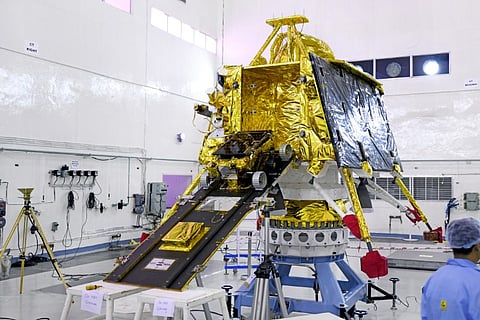

India is less than a week away from its landmark second mission to the moon as the Indian Space Research Organisation (ISRO) prepares for the launch of Chandrayaan-2 on July 15. The ambitious mission will make India the fourth nation after the former Soviet Union, the United States and China to land and ride on the moon to conduct various experiments on its orbit, on its surface, atmosphere and beneath.
The 3,890 kg-Chandrayaan-2, meaning ‘moon vehicle’ in Sanskrit, is the successor to Chandrayaan-1, India’s 2008 mission to the moon. This will mark India’s first rover-based space mission and it is expected to land near the South Pole of the moon, the first time any country would have explored that region.
Here’s everything you need to know about the mission:
When and where is the launch? July 15 at 2.51 am from Satish Dhawan Space Centre in Sriharikota, Andhra Pradesh.
Can you watch it live? About 5,000 audience members will be able to watch the launch live, though registrations are now closed. To watch a live stream of the launch, click the link here.
What do I need to know about the launcher and spacecraft? The Geosynchronous Satellite Launch Vehicle-MkIII (GSLV Mk-III) will carry Chandrayaan-2. It is India's most powerful launcher to date, ISRO said. The lander has been named ‘Vikram,’ after Dr Vikram Sarabhai, the father of the Indian space program. The six-wheeled robotic rover has been dubbed ‘Pragyan.’ The satellite will carry 13 Indian payloads, or scientific instruments, including eight in the orbiter, three in the lander and two in the rover, according to ISRO. There will also be a passive experiment from NASA.
"The rocket will place the orbiter in the geo-transfer orbit for its voyage to the lunar orbit, covering the vast distance (385,000 km) from earth to the moon in 50 days for the lander to have a soft landing near its south pole on September 6," ISRO Chairman K Sivan told the media.
When will it land? According to ISRO, the lander, Vikram, will attempt a soft landing in a high plain between two craters — Manzinus C and Simpelius N — near the South Pole of the moon on September 6. The rover will probe the terrain and carry out experiments on the lunar surface for the equivalent of 14 Earth days (one Lunar day). The orbiter’s mission will continue for one year.
With IANS inputs